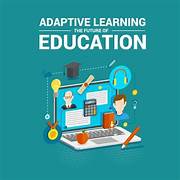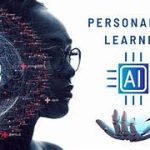The Use of AI in Developing Adaptive Learning Technologies for Disabled Students
Introduction
Education is a fundamental right for all individuals, yet traditional learning environments often fail to fully accommodate the needs of students with disabilities. With the advent of artificial intelligence (AI), new opportunities are emerging to create adaptive learning technologies that provide personalized support and accessibility. AI-driven solutions can transform how disabled students engage with educational content, overcome learning barriers, and achieve academic success.
This article explores the role of AI in developing adaptive learning technologies for disabled students, the benefits these innovations offer, and the challenges that need to be addressed.
Understanding Adaptive Learning Technologies
Adaptive learning technologies use AI and machine learning (ML) algorithms to tailor educational content and experiences to each student’s unique needs. These technologies analyze student behavior, track progress, and adjust instruction in real time, ensuring that learners receive personalized support based on their abilities and challenges.
For disabled students, AI-powered adaptive learning tools can provide:
- Speech-to-text and text-to-speech conversion for visually or hearing-impaired students.
- Customized learning interfaces that adjust based on cognitive and physical disabilities.
- Assistive robotics and virtual tutors for personalized guidance.
- AI-powered accessibility features such as real-time captions, sign language translation, and predictive text.
AI Applications in Adaptive Learning for Disabled Students
1. Personalized Learning Experiences
One of the most significant advantages of AI in education is its ability to create customized learning experiences. AI-powered platforms assess students’ strengths, weaknesses, and learning preferences, adjusting content accordingly. For instance:
- Students with dyslexia can receive text formatted in special fonts that enhance readability.
- Visually impaired students can use AI-generated audio descriptions and braille conversion tools.
- Students with ADHD can benefit from interactive learning modules that maintain engagement.
By analyzing learning patterns, AI ensures that students receive the right resources at the right time, making education more effective and inclusive.
2. AI-Powered Speech Recognition and Communication Tools
For students with speech and hearing impairments, AI-driven speech recognition tools can convert spoken language into text in real time, allowing them to engage in classroom discussions and lectures. Similarly, AI-powered communication apps can:
- Translate spoken words into sign language using virtual avatars.
- Enable voice synthesis for students with speech impairments.
- Provide AI-driven speech therapy tools to help students develop communication skills.
These technologies bridge communication gaps and empower students to participate actively in academic environments.
3. Assistive Technologies for Physical Disabilities
AI-driven assistive technologies are revolutionizing learning for students with physical disabilities. These innovations include:
- Eye-tracking and brain-computer interfaces that enable students to control computers using their eyes or thoughts.
- AI-powered exoskeletons and robotic arms that assist students with mobility impairments.
- Voice-activated learning tools that allow hands-free interaction with digital content.
By removing physical barriers to learning, these AI-driven solutions provide greater independence and accessibility.
4. AI in Augmentative and Alternative Communication (AAC)
AAC systems assist students who have difficulty speaking by offering AI-powered tools that enhance communication. Some of these include:
- Predictive text and smart keyboards that suggest words based on user intent.
- AI-driven chatbots that help students express their thoughts through virtual conversations.
- Gesture recognition systems that interpret movements and translate them into speech.
These AI applications improve social interactions and educational engagement for students with communication challenges.
5. Real-Time Accessibility Enhancements
AI can enhance accessibility by providing real-time solutions such as:
- Automated captioning and transcription services for students with hearing impairments.
- AI-driven language translation for multilingual accessibility.
- Adaptive lighting and sound adjustments for students with sensory sensitivities.
These features ensure that learning environments cater to diverse needs, making education more inclusive.
Benefits of AI in Adaptive Learning for Disabled Students
1. Increased Accessibility
AI-powered tools remove many barriers that disabled students face in traditional education settings. Whether through speech recognition, text-to-speech conversion, or alternative communication methods, AI ensures that students can access educational content in ways that suit their abilities.
2. Enhanced Engagement and Motivation
Personalized learning keeps students engaged by tailoring content to their interests and learning styles. AI-driven gamification elements, interactive simulations, and virtual tutors make learning more enjoyable and effective.
3. Greater Independence and Confidence
AI enables disabled students to interact with educational materials independently, reducing their reliance on human assistance. This independence fosters confidence and empowers students to take charge of their learning journey.
4. Data-Driven Support for Educators and Parents
AI collects and analyzes data on student performance, providing insights that help educators and parents support learning more effectively. Teachers can adjust lesson plans based on AI recommendations, while parents can monitor their child’s progress through AI-generated reports.
5. Scalability and Cost-Effectiveness
AI-driven adaptive learning solutions can be scaled to reach a broader audience, making quality education accessible to students worldwide. Additionally, these technologies can reduce the need for specialized human support, lowering overall educational costs.
Challenges and Considerations
Despite its advantages, the implementation of AI in adaptive learning for disabled students faces several challenges:
1. Data Privacy and Security
AI systems collect vast amounts of personal data, raising concerns about privacy and security. Educational institutions must implement strict data protection policies to safeguard student information.
2. Bias in AI Algorithms
AI models must be trained on diverse datasets to ensure they do not reinforce biases. If not properly designed, AI systems may fail to address the unique needs of certain disabilities.
3. High Development and Implementation Costs
Developing AI-powered adaptive learning technologies requires significant investment. Schools and institutions may face financial constraints in adopting these solutions, particularly in low-income regions.
4. Need for Human Oversight
While AI enhances learning, human teachers remain essential in providing emotional support, critical thinking guidance, and social development. AI should complement, not replace, traditional education methods.
5. Digital Literacy and Accessibility Gaps
Not all students have access to the necessary technology or digital literacy skills to use AI-driven learning tools effectively. Bridging this gap is crucial for equitable education.
Future Prospects
The future of AI in adaptive learning for disabled students looks promising, with several advancements on the horizon:
- AI-powered virtual reality (VR) and augmented reality (AR) learning environments that create immersive educational experiences.
- Emotion AI that detects frustration or confusion and adjusts learning content accordingly.
- Brain-computer interfaces that enable direct communication between the brain and digital devices.
- More sophisticated AI tutors capable of providing real-time, emotionally intelligent feedback.
These innovations will further improve accessibility and inclusivity in education.
Conclusion
AI-driven adaptive learning technologies are revolutionizing education for disabled students, providing personalized, accessible, and engaging learning experiences. From speech recognition and alternative communication tools to assistive robotics and real-time accessibility features, AI is breaking down barriers and empowering students to achieve academic success.
While challenges such as data privacy, bias, and implementation costs remain, ongoing advancements in AI promise a more inclusive and equitable future for education. By integrating AI responsibly and ethically, we can create a world where every student, regardless of their abilities, has the opportunity to learn and thrive.


